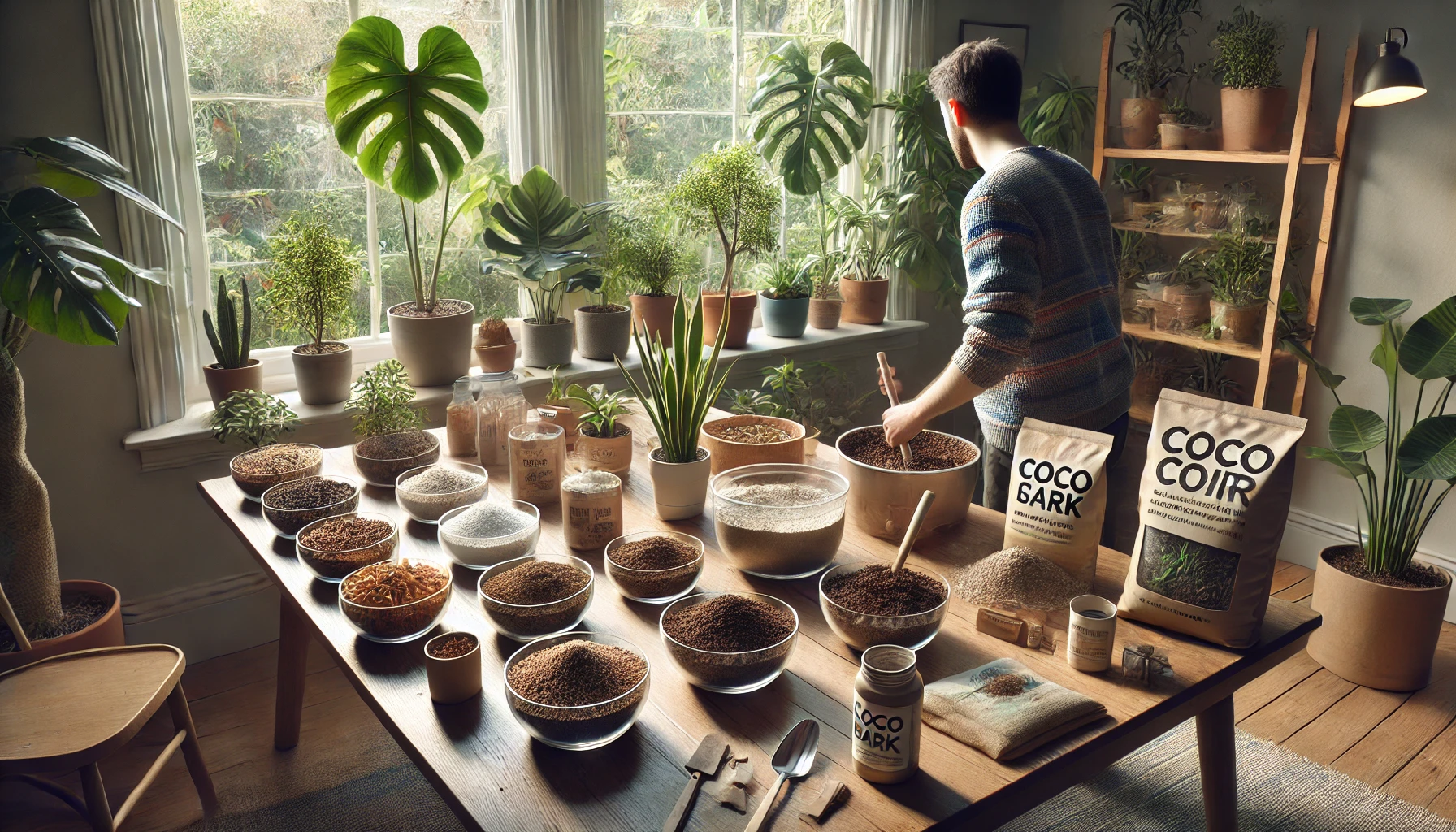You can have the perfect light, the cutest pot, and even the most beautiful plant — but if the soil isn’t right, none of it will matter. Soil is more than just “dirt” — it’s the foundation of your plant’s health. It controls how roots grow, how much water your plant holds, and even how nutrients are absorbed.
When it comes to indoor gardening, using the correct soil mix is one of the most overlooked — and most important — parts of plant care.
In this guide, we’ll break down how to choose the best soil for your indoor plants, what different components do, and how to customize your mix for different plant types.
Why the Right Soil Matters
Unlike outdoor plants, indoor plants are confined to pots — meaning they rely entirely on the soil you provide. The right mix will:
- Allow roots to breathe through proper aeration
- Drain excess water, preventing root rot
- Hold enough moisture without staying soggy
- Deliver nutrients and support strong growth
A poor soil mix can lead to problems like compacted roots, fungus gnats, mold, drooping leaves, or worse — a slow, silent death of your plant.
Understanding Soil Components
Most indoor potting mixes are made up of several key materials. Each one plays a specific role in keeping your plant happy.
1. Peat Moss or Coconut Coir
- Function: Retains moisture and provides structure
- Differences:
- Peat moss is widely used but not eco-friendly
- Coco coir is sustainable, reusable, and has similar benefits
Use for: Almost all houseplants — unless they need fast drainage
2. Perlite
- Function: Increases aeration and improves drainage
- Appearance: Small, white, popcorn-like stones
- Bonus: Lightweight and helps prevent soil compaction
Use for: Succulents, cacti, and any mix that needs airflow
3. Vermiculite
- Function: Holds moisture and nutrients
- Appearance: Shiny, flake-like particles
- Best for: Moisture-loving plants or mixes for seedlings
Use in moderation for tropical or delicate foliage plants
4. Pine Bark or Orchid Bark
- Function: Adds chunky texture and promotes air circulation
- Best for: Epiphytic plants like orchids, monsteras, or philodendrons
This helps mimic their natural growing environment (on trees)
5. Compost or Worm Castings
- Function: Provides slow-release nutrients naturally
- Note: Use sparingly indoors to avoid smells or pests
Great for boosting growth without synthetic fertilizers
6. Sand
- Function: Increases drainage and weight
- Best for: Desert plants like cacti or snake plants
Only use coarse sand — not beach sand or fine play sand
Pre-Made Potting Mix vs. DIY
Store-Bought Potting Mix
Most commercial potting mixes are made for general use and are safe for most houseplants. However, they’re not always tailored to specific needs — and some may retain too much moisture for certain species.
Look for:
- “Indoor plant” or “houseplant” labeled mixes
- Organic options, if you prefer chemical-free
- Avoid garden soil or topsoil — they’re too heavy for pots
Making Your Own Mix
If you want more control, making your own mix is easy. You just need a few base materials and the right ratios.
Basic indoor plant mix:
- 2 parts coco coir or peat moss
- 1 part perlite
- 1 part compost or worm castings
From there, you can tweak based on plant type.
Best Soil Mixes by Plant Type
For Tropical Foliage Plants (e.g., Philodendron, Monstera, Peace Lily)
- Needs: Moisture retention, moderate drainage
- Ideal mix:
- 2 parts coco coir or peat moss
- 1 part perlite
- 1 part pine bark
- Optional: small handful of worm castings
For Succulents and Cacti
- Needs: Excellent drainage, dry between waterings
- Ideal mix:
- 2 parts coarse sand
- 1 part perlite
- 1 part cactus soil or coco coir
- Optional: small amount of compost
Tip: Add gravel or pumice to boost airflow
For Orchids and Aroids (e.g., Orchid, Anthurium, Monstera)
- Needs: Fast drainage, chunky texture
- Ideal mix:
- 2 parts orchid bark
- 1 part perlite
- 1 part coco coir or peat moss
Tip: These plants love light and airflow around roots
For Ferns and Calatheas
- Needs: Moisture retention, soft texture, light feeding
- Ideal mix:
- 2 parts coco coir
- 1 part vermiculite
- 1 part compost
- Optional: sprinkle of perlite to prevent sogginess
Keep humidity high and water consistently
For Snake Plant and ZZ Plant
- Needs: Dry roots, low maintenance
- Ideal mix:
- 2 parts cactus soil
- 1 part sand
- 1 part perlite
Water only when soil is completely dry
How to Know If Your Soil Needs Changing
Even the best soil breaks down over time. Watch for these signs:
- Water pools on top and drains slowly
- White mold or fungus appears
- Soil smells sour or stale
- Roots are tightly packed and circling the pot
- Plant stops growing or looks unhappy despite care
In general, repot or refresh soil every 12–18 months, or sooner if you notice issues.
Bonus: Tips for Potting Success
- Always use pots with drainage holes
- Layer with a bit of gravel or mesh to prevent clogging
- Don’t pack soil too tightly — roots need space to breathe
- Water thoroughly after potting, then allow to dry according to plant type
- Label your homemade mixes to remember what’s inside
Final Thoughts: The Right Soil = Happy Plants
Healthy plants start with healthy soil. By understanding what your indoor plants need — and how different mixes support different species — you’ll create the perfect environment for growth, beauty, and resilience.
Whether you buy a ready-made bag or mix your own recipe, choosing the right soil is one of the smartest things you can do for your green companions.
After all, your plants can’t move… but you can give them exactly what their roots are looking for.
